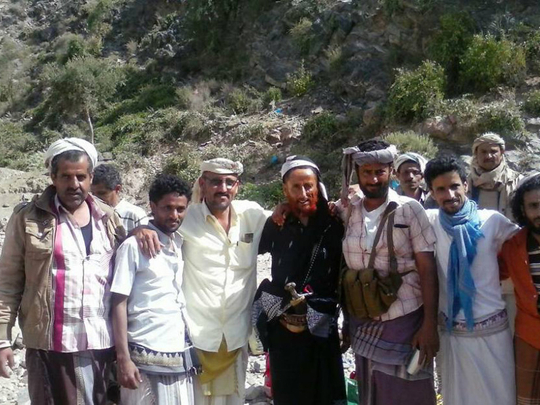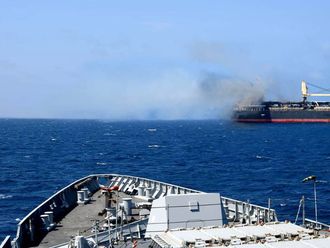
Al Mukalla: A prisoner exchange in the southern province of Lahj, saw the swapping of 23 Al Houthi militants for 25 pro-government fighters, according to local media reports.
The swap took place on Sunday in the mountainous Al Qabbaytah district.
Al Houthis also handed over bodies of pro-government prisoners who died during detention.
The Aden-based Al Omanaa newspaper said that the freed prisoners are resistance fighters from Al Sabeha region in Lahj and other areas in southern Yemen.
Al Houthi militants are from different provinces in northern and western Yemen like Ibb, Hodeida and Mahweet.
The largest exchange of prisoners took place in June last year in the southern city of Taiz where government forces and Al Houthis swapped nearly 200 prisoners, in a confidence-building measure aimed at fostering goodwill before peace talks.
Hadi says Al Houthis are holding thousands of politicians, military officers and activists in order to use them as a bargaining chip to extract concessions from the government and the Saudi-led coalition.
On Sunday, Yemen’s minister of human rights, Mohammad Askar, told the Saudi Okaz newspaper that Al Houthi militants are holding more than 4,000 people and have planted 200,000 landmines all over Yemen since the beginning of the war which erupted in 2015.
Fighting meanwhile raged in Lahj in the Tour Al Baha area—a chain of rugged mountains—where government fighters are trying to gain control of the hilly positions used by Al Houthis to shell residential areas.
Meanwhile in the southern province of Abyan, Abdul Latefi Al Sayed, the commander of the UAE-backed Security Belt forces narrowly escaped death on Tuesday when a bomb exploded near his convoy in Al Mahfad district.
Official local sources said that Al Sayed was injured in the attack that bore the hallmarks of Al Qaida.
Al Sayed led an offensive earlier this month designed to boot militants from Al Mahfad, Al Qaida’s key stronghold in Abyan.
The militants who fled to the mountains retaliated by planting many IEDs and mounting suicide attacks at the UAE-backed Yemeni forces.












